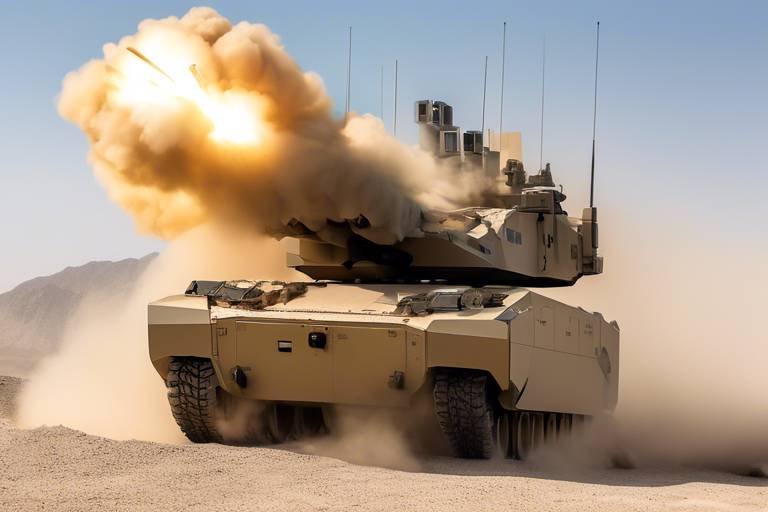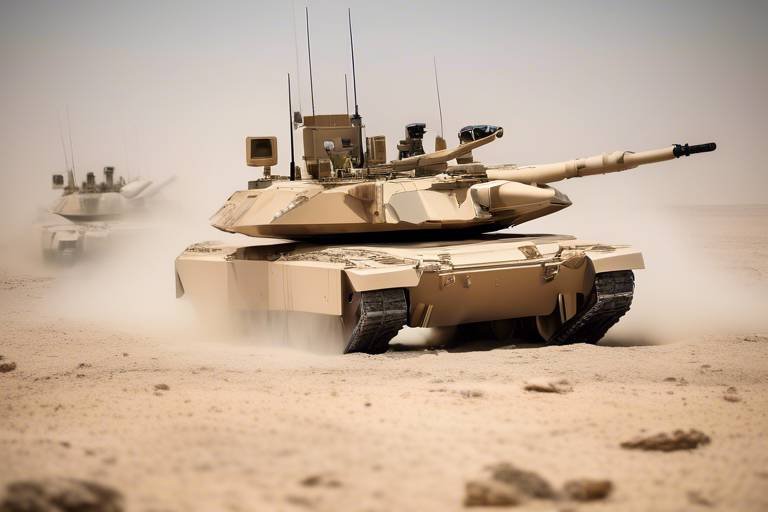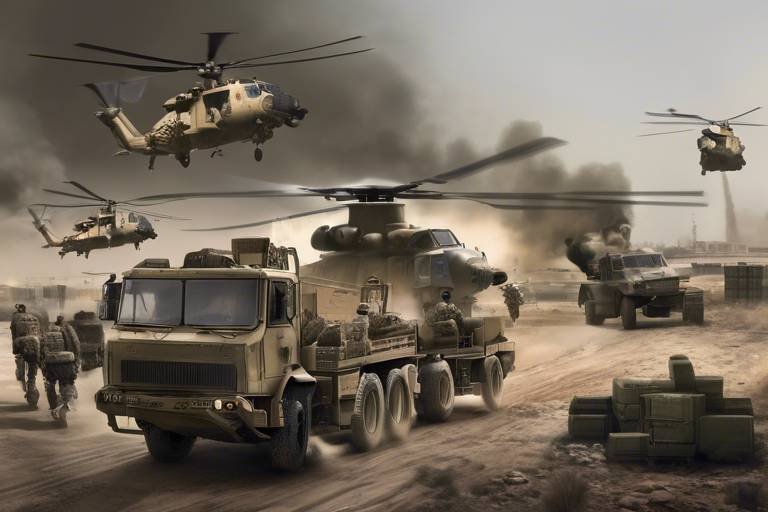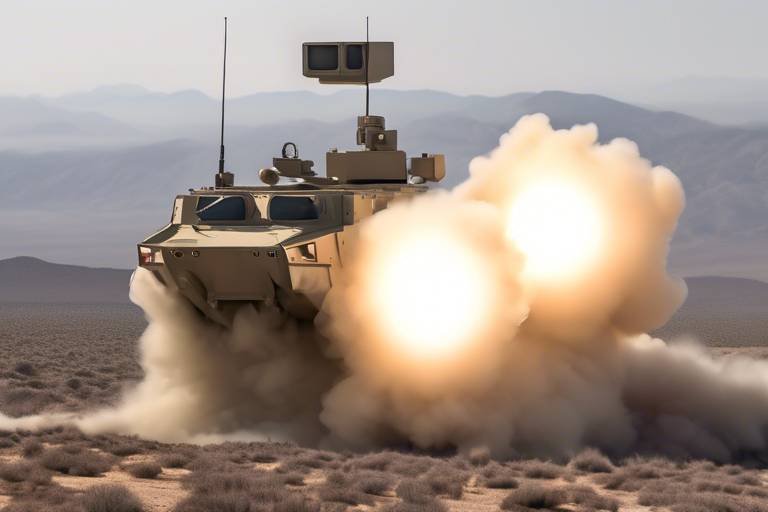Evaluating the Role of Artificial Intelligence in Defense Strategies
In an era where technology evolves at lightning speed, artificial intelligence (AI) is emerging as a game-changer in defense strategies. Imagine a world where military operations are not just reactive but predictive, where decisions are made not just by human intuition but by data-driven insights. This transformation is not just a futuristic dream; it’s happening right now. AI is enhancing decision-making, operational efficiency, and security measures, reshaping how modern militaries operate. But what does this really mean for the future of defense?
The journey of AI in defense is akin to a thrilling rollercoaster ride, marked by significant milestones and groundbreaking advancements. Initially, AI was a concept confined to science fiction, but as technology progressed, its integration into defense systems became inevitable. From the early days of rudimentary algorithms to today’s sophisticated machine learning models, the evolution has been rapid. Key developments, such as the creation of expert systems in the 1980s and the advent of deep learning in the 2010s, have paved the way for military applications that were once unimaginable.
AI isn’t just a tool; it’s a strategic partner for military leaders. By leveraging AI algorithms, decision-makers can sift through mountains of data to uncover actionable insights. Picture this: a military leader faced with a critical decision has access to predictive analytics that can forecast outcomes based on historical data. This capability not only enhances situational awareness but also allows for more informed strategic planning. The implications are profound—decisions can be made faster, with greater accuracy, and with a level of confidence that was previously unattainable.
One of the most significant advantages of AI in defense is its ability to collect and analyze vast amounts of data. Imagine trying to piece together a puzzle where each piece represents a piece of intelligence. AI acts as the master puzzle solver, rapidly assembling the pieces to provide a clear picture of the battlefield. By improving intelligence operations, AI enables military forces to assess threats more accurately and swiftly, ensuring that they are always one step ahead of potential adversaries.
In the realm of surveillance, AI’s capabilities are nothing short of revolutionary. Drones equipped with AI technology can monitor battlefield conditions in real time, analyzing data from various sensors to provide actionable insights. This ability to gather intelligence quickly and efficiently enhances situational awareness and allows military leaders to make timely decisions. The use of AI in real-time surveillance is like having a watchful eye that never blinks, always ready to report on the changing dynamics of the battlefield.
AI is also playing a crucial role in the maintenance of military equipment. Through advanced analytics, AI can predict when equipment is likely to fail, allowing for timely maintenance that ensures operational readiness. This predictive maintenance approach is akin to having a crystal ball that reveals potential issues before they become critical, thus reducing downtime and keeping military operations running smoothly.
The rise of autonomous systems, such as drones and robotic units, marks a significant shift in modern warfare. These systems offer operational advantages, including increased efficiency and reduced risk to human life. However, the deployment of autonomous systems also raises ethical considerations. Questions about accountability and the potential for unintended consequences loom large. As we embrace these technologies, it’s essential to navigate the moral landscape carefully, ensuring that we harness their power responsibly.
As defense strategies evolve, so do the threats that accompany them. AI is stepping up to the plate, strengthening cybersecurity measures within military frameworks. By employing advanced algorithms, AI enhances threat detection capabilities, enabling faster identification of potential cyber threats to national security. In a world where cyberattacks are becoming increasingly sophisticated, AI acts as a sentinel, tirelessly guarding against malicious intrusions.
Advanced algorithms powered by AI are revolutionizing the way military organizations detect and respond to cyber threats. These algorithms analyze patterns and anomalies in data, allowing for the swift identification of potential risks. Think of it as having a highly trained watchdog that never sleeps, always on the lookout for signs of trouble. This proactive approach to threat detection is essential in safeguarding national security.
AI is also automating incident response processes, significantly improving the efficiency and effectiveness of countermeasures against cyber threats. By automating routine tasks, military personnel can focus on more strategic initiatives, ultimately enhancing overall operational readiness. This automation is like having a well-oiled machine that can spring into action at a moment’s notice, ensuring that defenses are robust and responsive.
- What is the role of AI in modern military operations?
AI enhances decision-making, improves operational efficiency, and strengthens security measures in defense strategies. - How does AI improve data collection in defense?
AI can analyze vast amounts of data quickly, providing actionable insights that enhance intelligence operations. - What are the ethical considerations of autonomous systems?
While they offer operational advantages, ethical concerns regarding accountability and unintended consequences must be addressed. - How does AI contribute to cybersecurity in defense?
AI enhances threat detection and automates incident response, improving the overall security posture of military organizations.

The Evolution of AI in Defense
Artificial Intelligence (AI) has come a long way since its inception, and its evolution in the defense sector is nothing short of remarkable. Initially, AI was a concept confined to science fiction, often depicted as a futuristic dream. However, as technology advanced, the integration of AI into defense strategies began to take shape. The journey of AI in defense can be traced back to the early days of computing, where basic algorithms were developed for simple tasks. As we progressed through the decades, significant milestones emerged that would ultimately redefine military capabilities.
One of the pivotal moments in the evolution of AI was during the Cold War era, when both the United States and the Soviet Union invested heavily in technology to gain a strategic advantage. This period saw the development of early AI systems that could process information faster than human operators. The introduction of expert systems in the 1980s marked a significant leap, allowing military personnel to make informed decisions based on data analysis. These systems were designed to mimic human expertise in specific domains, providing valuable insights for tactical operations.
Fast forward to the 21st century, and we witness a surge in AI advancements, particularly in machine learning and deep learning. These technologies enable computers to learn from vast amounts of data, improving their performance over time. In defense, this means that AI can analyze battlefield conditions, predict enemy movements, and even assist in logistics management. The ability to process and analyze data in real-time is crucial for modern military operations, where every second counts.
Moreover, the integration of AI into unmanned systems, such as drones and autonomous vehicles, has revolutionized how military missions are conducted. These systems can operate with minimal human intervention, performing complex tasks that were once deemed too dangerous for human soldiers. For instance, AI-powered drones can conduct surveillance missions, gather intelligence, and even engage targets with precision. This shift not only enhances operational efficiency but also reduces the risk to human life.
As we look at the future of AI in defense, it is essential to recognize the ethical implications that accompany these advancements. The use of AI in warfare raises questions about accountability, decision-making, and the potential for autonomous weapons systems. While the benefits of AI are undeniable, striking a balance between technological innovation and ethical responsibility is paramount. The evolution of AI in defense is not just about enhancing military capabilities; it's also about ensuring that these technologies are used wisely and ethically.
In summary, the evolution of AI in defense has transformed military strategies, enabling faster decision-making and operational efficiency. From its humble beginnings to its current state of advanced technologies, AI continues to shape the future of warfare. As we embrace these innovations, we must also be vigilant about the ethical considerations that come with them, ensuring that AI serves as a tool for peace and security rather than a catalyst for conflict.
- What are the main benefits of AI in defense? AI enhances decision-making, improves operational efficiency, and provides real-time data analysis.
- How has AI changed military strategies? AI allows for faster and more accurate assessments of threats, enabling proactive measures in defense planning.
- What ethical considerations are associated with AI in warfare? The use of AI raises questions about accountability, decision-making processes, and the potential for autonomous weapons.
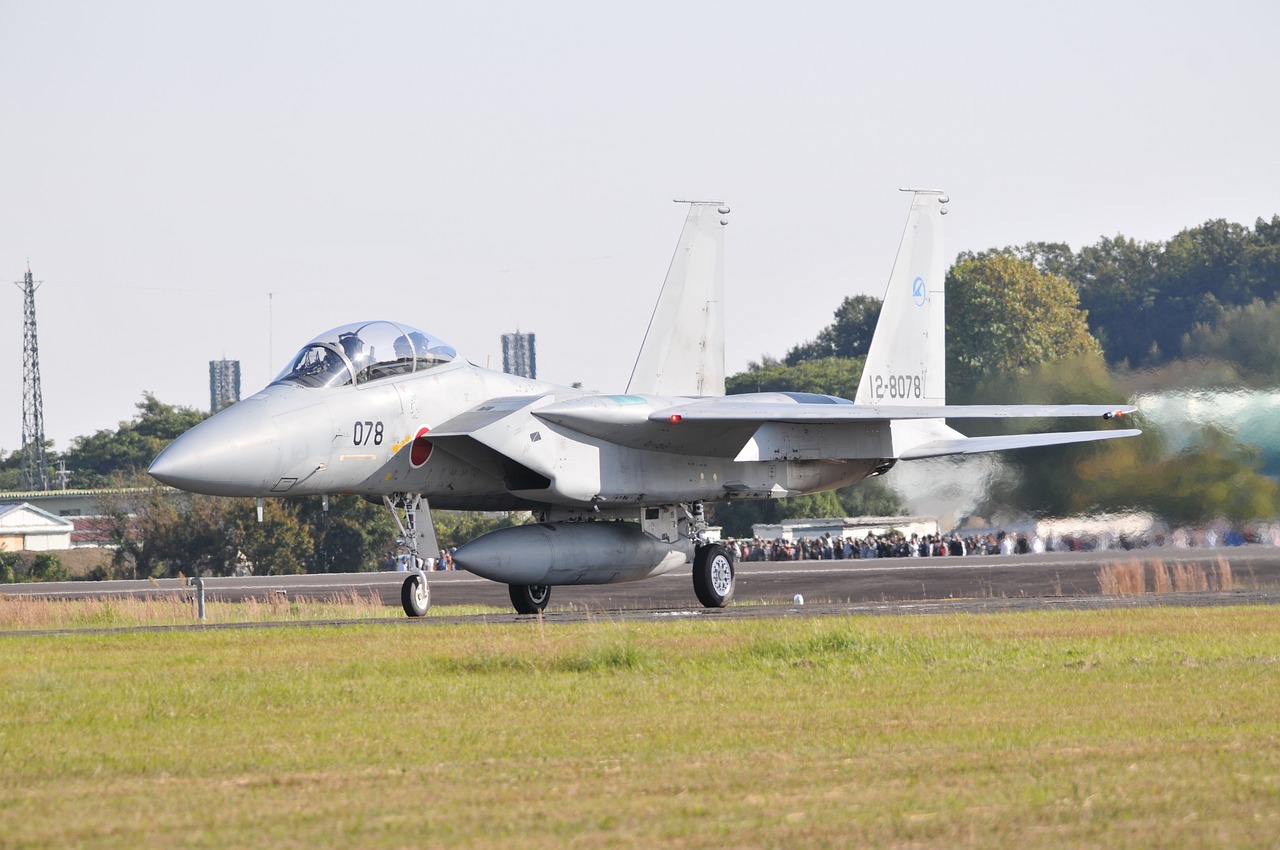
AI-Powered Decision Making
In today's fast-paced world, where information flows at lightning speed, military leaders face the daunting task of making critical decisions under immense pressure. This is where Artificial Intelligence (AI) steps in as a game-changer. Imagine having a trusted advisor that can sift through mountains of data in seconds, providing insights that would take humans hours or even days to uncover. AI algorithms are revolutionizing decision-making processes in defense strategies, transforming how military operations are planned and executed.
One of the most significant advantages of AI in decision-making is its ability to leverage predictive analytics. By analyzing historical data and identifying patterns, AI can forecast potential outcomes of various military scenarios. This predictive capability allows leaders to weigh their options more effectively. For instance, if a military leader is considering a strategic strike, AI can analyze past operations, current intelligence, and even weather conditions to suggest the optimal time and approach. This not only enhances the decision-making process but also increases the likelihood of success.
Furthermore, AI excels in data processing. In military operations, the sheer volume of information can be overwhelming. From satellite imagery to intercepted communications, the data is vast and varied. AI can automate the analysis of this information, filtering out noise and highlighting the most relevant details. This means that military leaders can focus on what truly matters—making informed decisions based on accurate and timely information.
At the heart of AI-powered decision-making is the ability to collect and analyze data efficiently. AI technologies are designed to gather information from numerous sources, including social media, satellite feeds, and reconnaissance reports. By integrating these diverse data streams, AI provides a comprehensive view of the operational landscape. For example, during a conflict, AI can analyze troop movements, supply routes, and enemy communications in real-time, enabling military leaders to respond swiftly to changing circumstances.
One of the most exciting applications of AI in defense is its role in real-time surveillance. Drones equipped with AI technology can monitor battlefield conditions continuously, analyzing video feeds to detect unusual activities or potential threats. Imagine a drone flying over a conflict zone, autonomously identifying enemy positions and relaying that information back to command centers. This not only enhances situational awareness but also allows for faster decision-making, as commanders can act on real-time data rather than relying on delayed reports.
AI is also making waves in the realm of predictive maintenance. In military operations, equipment failure can have dire consequences. AI algorithms can analyze data from various sensors embedded in military vehicles and equipment to predict when maintenance is required. By identifying potential issues before they escalate, military forces can ensure that their assets remain operational and ready for action. This proactive approach minimizes downtime and maximizes efficiency on the battlefield.
The rise of autonomous systems, such as drones and robotic units, is another facet of AI's impact on decision-making in defense. These systems can operate independently or in conjunction with human operators, executing commands based on AI-driven analysis. While this raises ethical considerations, the operational advantages are undeniable. Autonomous systems can carry out reconnaissance missions, deliver supplies, or even engage in combat, all while providing real-time data to human commanders. This synergy between man and machine enhances decision-making capabilities, allowing for more strategic and calculated responses in complex situations.
In conclusion, AI-powered decision-making is reshaping the landscape of military operations. By harnessing the power of predictive analytics, data processing, and autonomous systems, military leaders are better equipped to navigate the complexities of modern warfare. The future of defense strategies lies in the seamless integration of AI, ensuring that decisions are not only informed but also timely and effective.
- How does AI improve decision-making in defense? AI enhances decision-making by providing predictive analytics, processing vast amounts of data quickly, and offering real-time insights that inform military strategies.
- What are autonomous systems in military operations? Autonomous systems include drones and robotic units that can operate independently or with minimal human intervention, executing tasks based on AI analysis.
- What is predictive maintenance in military equipment? Predictive maintenance uses AI to analyze sensor data and predict when military equipment may need repairs, ensuring operational readiness and minimizing downtime.
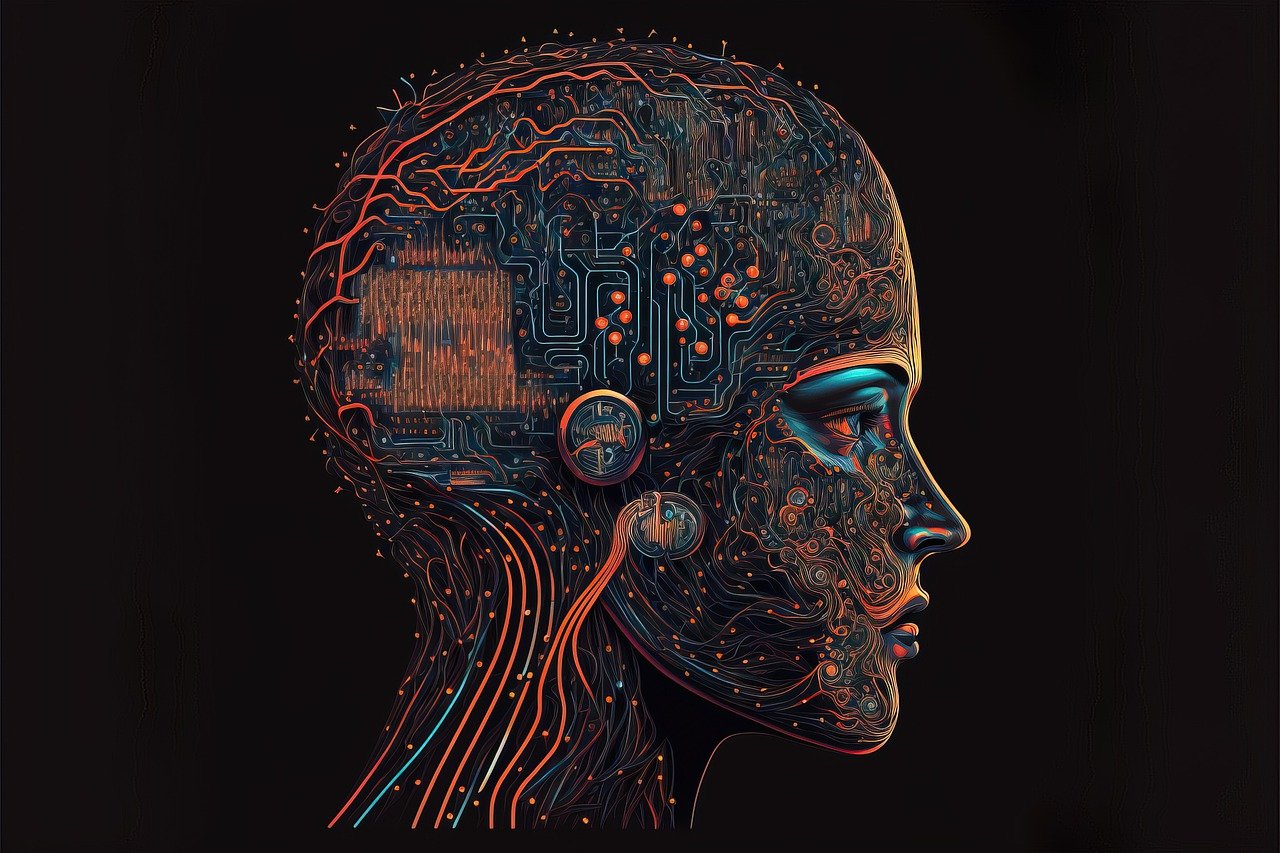
Data Collection and Analysis
In today's fast-paced military environment, the ability to collect and analyze data efficiently is more crucial than ever. With the advent of artificial intelligence, military operations are undergoing a significant transformation. Imagine having an assistant that can sift through mountains of data in seconds, pinpointing vital information that human analysts might overlook. This is the power of AI in data collection and analysis, and it’s reshaping how defense strategies are formulated and executed.
AI technologies can process vast amounts of data from various sources, including satellite imagery, social media, and intelligence reports. By leveraging machine learning algorithms, these systems can identify patterns and trends, providing military leaders with actionable insights. The result? A more informed decision-making process that enhances operational efficiency and effectiveness. For instance, AI can analyze historical data to predict future threats, allowing for a proactive rather than reactive approach to defense.
One of the most significant advantages of AI in this realm is its ability to perform real-time data analysis. This means that as events unfold on the battlefield, AI systems can continuously analyze incoming data, updating assessments and recommendations in real-time. This capability is particularly invaluable during critical situations where time is of the essence. Imagine a scenario where a military unit is deployed, and AI tools are analyzing enemy movements and environmental conditions as they happen, providing commanders with the most current information to adapt their strategies.
Moreover, AI enhances intelligence operations by automating the data collection process. Instead of relying solely on human analysts, AI systems can autonomously gather data from diverse sources, ensuring a comprehensive overview of the battlefield. This not only speeds up the intelligence cycle but also reduces the likelihood of human error. For instance, AI can be programmed to monitor specific regions or targets, continuously collecting data and alerting analysts to any significant changes or anomalies.
To illustrate the impact of AI on data collection and analysis, consider the following table that highlights the key benefits:
| Benefit | Description |
|---|---|
| Speed | AI systems can process data much faster than human analysts, allowing for real-time insights. |
| Accuracy | Machine learning algorithms reduce human error by providing precise data analysis. |
| Comprehensiveness | AI can gather data from multiple sources, ensuring a well-rounded view of the situation. |
| Predictive Capabilities | AI can identify trends and predict future events, enhancing strategic planning. |
In conclusion, the integration of AI into data collection and analysis is revolutionizing military operations. By automating processes and providing real-time insights, AI not only enhances the efficiency of intelligence operations but also significantly improves the decision-making capabilities of military leaders. As we continue to explore the potential of AI in defense strategies, one thing is clear: the future of warfare will be defined by our ability to harness the power of data.
- How does AI improve data collection in military operations? AI automates the gathering of data from various sources, providing a comprehensive overview and reducing human error.
- What are the benefits of real-time data analysis? Real-time analysis allows military leaders to adapt their strategies quickly based on the most current information available.
- Can AI predict future threats? Yes, AI can analyze historical data to identify patterns and trends, which helps in predicting potential future threats.

Real-Time Surveillance
In the ever-evolving landscape of modern warfare, has emerged as a game-changer, revolutionizing how military operations are conducted. Imagine having eyes in the sky that never blink, constantly monitoring the battlefield and providing critical information at lightning speed. This is precisely what AI-driven surveillance systems offer. By leveraging advanced technologies such as drones and sophisticated sensors, military forces can gather and analyze data in real-time, making informed decisions that can mean the difference between success and failure on the battlefield.
At the heart of this transformation is the integration of artificial intelligence, which enhances the capabilities of surveillance systems beyond traditional methods. Drones equipped with AI can autonomously navigate complex environments, identify potential threats, and relay crucial information back to command centers without human intervention. This not only increases operational efficiency but also minimizes the risk to personnel. With AI analyzing the data collected, military leaders can receive actionable insights, allowing them to respond swiftly to changing conditions.
One of the most impressive aspects of AI in real-time surveillance is its ability to process vast amounts of data almost instantaneously. Consider a scenario where multiple drones are deployed over a large area. Each drone collects a plethora of information, from visual imagery to thermal readings. AI algorithms can sift through this data, identifying patterns and anomalies that a human operator might miss. This capability is invaluable, especially in high-stakes situations where every second counts. The speed and accuracy of AI analysis enable military strategists to anticipate enemy movements and make tactical adjustments on the fly.
Moreover, the use of AI in real-time surveillance extends beyond just battlefield reconnaissance. It plays a crucial role in border security, maritime patrols, and counter-terrorism operations. For instance, coastal surveillance systems utilize AI to monitor shipping lanes for suspicious activities, detecting potential threats before they escalate. In urban environments, AI-powered surveillance can help identify unusual patterns of behavior, aiding law enforcement in preventing criminal activities.
As we look to the future, the implications of AI in real-time surveillance are profound. However, it is essential to address the ethical considerations that come with such powerful technology. The potential for misuse and invasion of privacy raises important questions about the balance between security and civil liberties. As military and defense organizations continue to integrate AI into their surveillance strategies, establishing clear guidelines and accountability measures will be crucial to ensure that these technologies are used responsibly.
- What are the primary benefits of AI in real-time surveillance?
AI enhances the speed and accuracy of data processing, enabling faster decision-making and improved situational awareness on the battlefield. - How do drones utilize AI for surveillance?
Drones equipped with AI can autonomously navigate, identify threats, and analyze data, providing real-time insights without human intervention. - What ethical concerns are associated with AI surveillance?
There are concerns about privacy invasion and the potential misuse of surveillance technologies, highlighting the need for responsible use and regulation.

Predictive Maintenance
In the realm of modern warfare, where every second counts and operational readiness is paramount, emerges as a game-changer. Imagine a world where military equipment, from tanks to aircraft, can anticipate failures before they occur—this is the magic of artificial intelligence (AI) at work. By harnessing advanced analytics and machine learning, defense forces can now monitor the health of their assets continuously, ensuring that they are always battle-ready. But how does this actually work?
At the core of predictive maintenance is the ability to collect and analyze vast amounts of data generated by military equipment. Sensors embedded in machinery can track performance metrics such as temperature, vibration, and operational hours. This data is then fed into AI algorithms, which sift through it to identify patterns and predict when a component is likely to fail. For instance, if a tank's engine shows signs of overheating over a period, the system can alert maintenance crews to intervene before a complete breakdown occurs.
Moreover, the benefits of predictive maintenance extend beyond just preventing equipment failures. By reducing unexpected downtime, military operations can run more smoothly and efficiently. This not only saves time and resources but also enhances the overall operational efficiency of defense strategies. In fact, studies have shown that predictive maintenance can decrease maintenance costs by up to 30% and increase equipment lifespan significantly.
To illustrate the impact of predictive maintenance in military applications, consider the following table that outlines its key benefits:
| Benefit | Description |
|---|---|
| Reduced Downtime | Predictive maintenance ensures that equipment is serviced before failures occur, minimizing operational interruptions. |
| Cost Savings | By preventing major repairs and optimizing maintenance schedules, defense budgets can be better allocated. |
| Increased Safety | Regular maintenance based on predictive analytics enhances the safety of personnel by ensuring equipment reliability. |
| Enhanced Readiness | With equipment always in optimal condition, military forces can respond more effectively to threats. |
But it's not just about numbers and analytics; the human element plays a crucial role, too. Maintenance crews are equipped with the insights provided by AI, allowing them to make informed decisions swiftly. This synergy between technology and human expertise creates a powerful defense mechanism, capable of adapting to the ever-changing dynamics of warfare.
As we look to the future, the evolution of predictive maintenance in defense strategies will undoubtedly continue to shape military operations. With advancements in AI and machine learning, the potential for even more sophisticated predictive models is on the horizon. Imagine a scenario where AI not only predicts equipment failures but also suggests optimal times for maintenance based on operational demands and mission priorities. The possibilities are endless, and the implications for national security are profound.
- What is predictive maintenance? Predictive maintenance is a proactive approach to maintenance that uses data analysis tools and techniques to detect anomalies in equipment performance and potential failures before they occur.
- How does AI enhance predictive maintenance? AI enhances predictive maintenance by analyzing large datasets from sensors and equipment, identifying patterns, and predicting when maintenance should be performed to avoid unexpected breakdowns.
- What are the benefits of predictive maintenance in the military? Benefits include reduced downtime, cost savings, increased safety, and enhanced operational readiness of military equipment.
- Will predictive maintenance replace human maintenance crews? No, predictive maintenance is designed to augment human capabilities, providing maintenance crews with valuable insights to make better decisions.
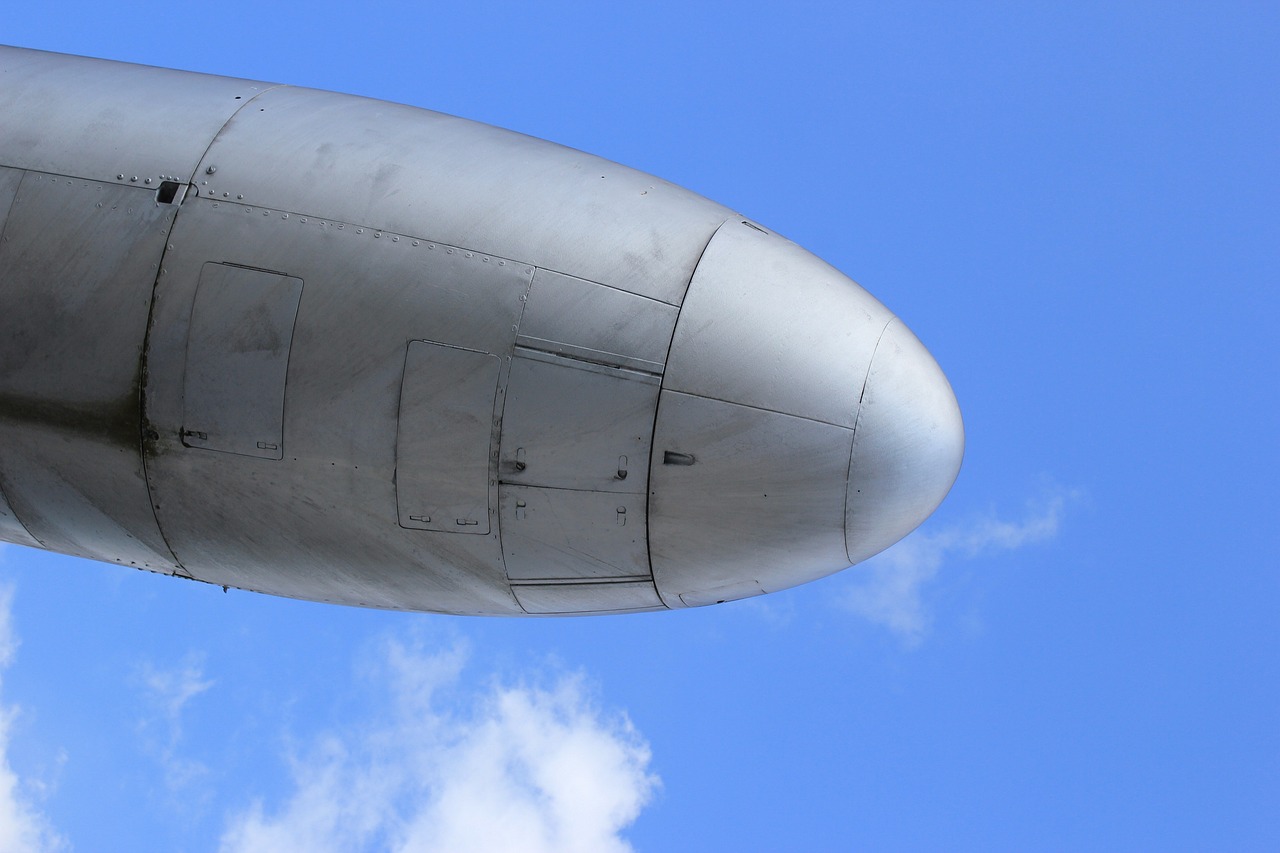
Autonomous Systems in Warfare
In recent years, the battlefield has undergone a dramatic transformation, largely due to the advent of autonomous systems. These systems, which include drones, robotic units, and unmanned ground vehicles, are not just futuristic concepts; they are actively reshaping modern warfare. Imagine a battlefield where machines can operate with minimal human intervention, making split-second decisions that could mean the difference between victory and defeat. This shift raises numerous questions about the future of military engagements and the ethical implications of using such technology.
One of the most significant advantages of autonomous systems is their ability to enhance operational efficiency. By utilizing advanced algorithms and machine learning, these systems can analyze vast amounts of data in real-time, allowing military leaders to make informed decisions quickly. For instance, drones equipped with AI can survey large areas, identify potential threats, and even engage targets without waiting for orders from a human operator. This capability not only speeds up response times but also minimizes the risks to human soldiers, who would otherwise be exposed to hostile environments.
However, the rise of autonomous systems also brings up critical ethical concerns. Should machines be allowed to make life-and-death decisions? This question has sparked intense debates among military strategists, ethicists, and policymakers. While proponents argue that AI can reduce human error and improve precision, critics warn of the potential for unaccountable actions and the dehumanization of warfare. The challenge lies in finding a balance between leveraging technology for strategic advantages while ensuring that human oversight remains a fundamental aspect of military operations.
Moreover, the operational advantages offered by autonomous systems extend beyond combat scenarios. For example, in logistics and supply chain management, robotic systems can autonomously transport supplies to troops in the field, significantly improving efficiency and reducing the need for human convoys that are vulnerable to ambushes. This capability allows military forces to maintain a constant supply line without exposing personnel to unnecessary risks.
As we look to the future, it is essential to consider the implications of integrating autonomous systems into defense strategies. The potential for enhanced battlefield capabilities is enormous, but so are the risks. Military leaders must navigate these waters carefully, ensuring that the deployment of such technologies aligns with international laws and ethical standards. Ultimately, the question remains: how do we harness the power of autonomous systems while maintaining the moral compass that guides military conduct?
- What are autonomous systems in warfare? Autonomous systems refer to machines that can operate independently in military contexts, such as drones and robotic units.
- How do autonomous systems improve military efficiency? They analyze data in real-time, enabling quicker decision-making and minimizing risks to human soldiers.
- What are the ethical concerns surrounding autonomous warfare? The primary concerns include accountability for decisions made by machines and the potential dehumanization of conflict.
- Can autonomous systems be used in logistics? Yes, they can transport supplies autonomously, reducing the need for human involvement in potentially dangerous situations.

Cybersecurity Enhancements
In today’s increasingly digital world, where data breaches and cyber threats loom large, the role of artificial intelligence (AI) in enhancing cybersecurity measures has become paramount. Imagine a fortress that not only defends itself but also learns from every attack—this is the essence of AI in cybersecurity. By leveraging advanced algorithms and machine learning, military defense strategies are evolving to tackle the sophisticated tactics employed by cyber adversaries.
One of the most striking applications of AI in defense is its ability to detect threats in real-time. Traditional methods often fall short when faced with the speed and complexity of modern cyberattacks. AI algorithms can analyze vast amounts of data within seconds, identifying patterns and anomalies that would be nearly impossible for human analysts to catch. This capability enables military leaders to respond promptly to potential threats, ensuring national security remains intact.
Furthermore, AI plays a vital role in automating incident response processes. When a cyber threat is detected, the speed of response is crucial. AI systems can initiate countermeasures automatically, drastically reducing the time it takes to neutralize an attack. This is akin to having a fire alarm that not only alerts you to danger but also calls the firefighters before the flames spread. Such automation not only enhances efficiency but also allows human operators to focus on strategic decision-making rather than getting bogged down in the minutiae of response protocols.
At the heart of AI-driven cybersecurity are threat detection algorithms. These algorithms analyze incoming data from various sources, including network traffic, user behavior, and system logs, to identify potential threats. By employing machine learning techniques, these algorithms continuously improve their accuracy over time. For instance, they can learn to recognize normal user behavior and flag any deviations that could indicate a breach. This proactive approach is essential in a landscape where cyber threats are constantly evolving.
To illustrate the effectiveness of AI in threat detection, consider the following table showcasing the comparison between traditional methods and AI-enhanced strategies:
| Feature | Traditional Methods | AI-Enhanced Methods |
|---|---|---|
| Speed of Detection | Hours to Days | Seconds to Minutes |
| Accuracy | Moderate | High |
| Adaptability | Low | High |
This table clearly shows the advantages of integrating AI into cybersecurity frameworks. The speed, accuracy, and adaptability of AI systems significantly enhance a military’s ability to defend against cyber threats.
In addition to threat detection, AI's role in incident response automation cannot be overstated. When a cyber incident occurs, the response must be swift and coordinated. AI systems can automate various aspects of the response process, from isolating affected systems to deploying countermeasures. This not only minimizes damage but also allows for a more organized and effective response. Imagine a military unit that can mobilize its forces in response to an attack without waiting for orders—this is the power of automation in cybersecurity.
Moreover, AI can assist in post-incident analysis, helping military strategists understand the nature of the attack and refine their defenses for the future. By continuously learning from each incident, AI systems become more adept at predicting and preventing future threats.
- How does AI improve cybersecurity in defense? AI enhances cybersecurity by providing faster threat detection, automating incident responses, and continuously learning from cyber incidents to improve defenses.
- What are threat detection algorithms? These are AI-driven systems that analyze data to identify potential cybersecurity threats based on patterns and anomalies.
- Can AI completely replace human analysts in cybersecurity? While AI significantly enhances capabilities, human oversight is still crucial for strategic decision-making and complex problem-solving.

Threat Detection Algorithms
In today's digital battlefield, have emerged as a crucial component in safeguarding national security. These algorithms harness the power of artificial intelligence to sift through enormous volumes of data, identifying potential threats that could compromise defense systems. Imagine trying to find a needle in a haystack; now, picture having a magnet that not only finds the needle but also alerts you to its presence before it can cause any harm. That's the essence of AI-powered threat detection.
At the heart of these algorithms lies machine learning, which enables systems to learn from past incidents and adapt to new threats. This adaptability is vital in a landscape where cyber threats are constantly evolving. For instance, traditional security measures often rely on known signatures of malware, making them vulnerable to new, unknown threats. In contrast, AI algorithms analyze patterns and behaviors, allowing them to detect anomalies that may indicate a cyberattack. This proactive approach not only enhances security but also minimizes response times, which can be critical in averting disasters.
To illustrate the effectiveness of these algorithms, consider the following table that outlines some key features and benefits:
| Feature | Description | Benefit |
|---|---|---|
| Real-Time Analysis | Continuous monitoring of network traffic | Immediate threat identification and response |
| Anomaly Detection | Identifies unusual patterns in data | Early warning of potential attacks |
| Automated Learning | Adapts based on new data and threats | Staying ahead of emerging threats |
| Scalability | Can handle increasing volumes of data | Efficient management of resources |
Moreover, these algorithms are not just limited to traditional cybersecurity measures. They extend their capabilities to monitor and analyze social media, communications, and even dark web activities. By doing so, they provide defense agencies with a comprehensive view of potential threats that may be brewing outside conventional channels.
As we delve deeper into the world of AI-driven threat detection, it's essential to recognize that while these systems are powerful, they are not infallible. The reliance on algorithms raises questions about bias and transparency. For instance, if an algorithm is trained on biased data, it may produce skewed results, potentially overlooking genuine threats or flagging false positives. Thus, continuous evaluation and adjustment of these algorithms are paramount to ensure they operate fairly and effectively.
In conclusion, the integration of threat detection algorithms into defense strategies represents a significant leap forward in our ability to protect national security. By leveraging AI's capabilities, military leaders can enhance their situational awareness, respond more swiftly to incidents, and ultimately, safeguard their nations against a myriad of cyber threats. As we continue to explore this fascinating intersection of technology and defense, one thing is clear: the future of national security will be profoundly shaped by the advancements in artificial intelligence.
- What are threat detection algorithms?
Threat detection algorithms are AI-driven systems designed to identify and respond to potential cyber threats by analyzing data patterns and behaviors.
- How do these algorithms improve security?
They enhance security by providing real-time analysis, anomaly detection, and automated learning, allowing for faster identification and response to threats.
- Are there risks associated with using AI for threat detection?
Yes, risks include potential biases in the algorithms and the need for continuous evaluation to ensure effectiveness and fairness.

Incident Response Automation
In today's fast-paced digital landscape, the threat of cyberattacks looms larger than ever, making a cornerstone of modern defense strategies. Imagine a world where military and defense systems can instantly react to threats, much like a reflex action in our own bodies. This is exactly what AI-driven automation aims to achieve. By leveraging advanced algorithms and machine learning, defense organizations can streamline their response to incidents, drastically reducing the time it takes to mitigate potential threats.
One of the most significant advantages of automating incident response is the ability to handle high volumes of alerts without overwhelming human operators. Traditional methods often lead to alert fatigue, where analysts might miss critical warnings due to sheer volume. With AI, systems can prioritize alerts based on severity and context, ensuring that the most pressing threats are addressed first. For instance, an AI system can analyze patterns from previous attacks and assess which alerts are more likely to indicate a genuine threat, allowing human operators to focus on what truly matters.
Moreover, incident response automation enhances the speed and accuracy of responses. Imagine a scenario where a cyber breach is detected. In a manual system, it could take precious minutes or even hours to assess the situation, gather the right team, and implement a response. However, with AI, the system can automatically initiate predefined response protocols, such as isolating affected systems, blocking malicious IP addresses, or even deploying countermeasures—all in a matter of seconds. This rapid response is crucial in minimizing damage and maintaining operational integrity.
To illustrate the effectiveness of incident response automation, consider the following table that outlines key benefits:
| Benefit | Description |
|---|---|
| Speed | Automated systems can react to threats in real-time, significantly reducing response times. |
| Efficiency | AI prioritizes alerts, allowing human analysts to focus on critical threats rather than sifting through countless notifications. |
| Consistency | Automated responses ensure that protocols are followed consistently, reducing the risk of human error. |
| Scalability | AI systems can handle large volumes of data and alerts, making them ideal for growing cyber threats. |
However, as we embrace the benefits of automation, it’s crucial to address the challenges that come with it. One major concern is the potential for over-reliance on AI. While automation can handle many tasks efficiently, it’s essential to maintain a balance between human oversight and machine efficiency. There are instances where human intuition and experience play a vital role in assessing complex situations that AI might misinterpret. Therefore, a hybrid approach that combines the strengths of both AI and human analysts is often the most effective strategy.
As we look to the future, the integration of incident response automation into defense strategies is set to revolutionize how military organizations protect against cyber threats. With ongoing advancements in AI technology, the capabilities of these automated systems will only continue to grow, further enhancing our national security. The challenge will be ensuring that we harness this power responsibly, maintaining a vigilant human presence in the decision-making process while allowing AI to handle the heavy lifting in incident response.
- What is incident response automation? - It refers to the use of AI and automated systems to respond to cyber threats quickly and efficiently.
- How does AI improve incident response? - AI enhances speed, efficiency, and accuracy by prioritizing alerts and automating predefined response protocols.
- Are there risks associated with automated incident response? - Yes, over-reliance on AI can lead to potential misinterpretations of complex situations; hence, human oversight is essential.
- What are the key benefits of incident response automation? - Key benefits include speed, efficiency, consistency, and scalability in handling cyber threats.
Frequently Asked Questions
- What is the role of artificial intelligence in modern defense strategies?
Artificial intelligence plays a crucial role in modern defense strategies by enhancing decision-making, improving operational efficiency, and strengthening security measures. AI technologies help military leaders analyze vast amounts of data, predict outcomes, and make informed decisions quickly.
- How has AI evolved in the defense sector?
The evolution of AI in defense has been marked by significant milestones, from early computer simulations to advanced machine learning algorithms. Over the years, AI has been gradually integrated into various defense systems, leading to improved military capabilities and operational effectiveness.
- What are AI-powered decision-making tools used in the military?
AI-powered decision-making tools include predictive analytics and data processing systems that assist military leaders in strategic planning. These tools enable quicker assessments of threats and help in formulating effective responses based on real-time data.
- How does AI improve data collection and analysis in defense?
AI enhances data collection and analysis by processing vast amounts of information from various sources, allowing for faster and more accurate intelligence operations. This capability is essential for assessing threats and making timely decisions on the battlefield.
- What role does AI play in real-time surveillance?
AI significantly improves real-time surveillance by powering drones and sensors that monitor battlefield conditions. These AI systems can analyze data on the fly, providing military personnel with critical insights and situational awareness.
- Can AI help with predictive maintenance of military equipment?
Absolutely! AI aids in predictive maintenance by analyzing equipment performance data to predict failures before they occur. This ensures that military equipment remains operational and reduces downtime, ultimately enhancing mission readiness.
- What are autonomous systems, and how are they used in warfare?
Autonomous systems, such as drones and robotic units, are increasingly utilized in warfare to carry out missions with minimal human intervention. These systems offer operational advantages, but their use also raises ethical considerations regarding accountability and decision-making in combat scenarios.
- How does AI enhance cybersecurity in defense?
AI enhances cybersecurity by implementing advanced algorithms that improve threat detection and response capabilities. These AI systems can identify potential cyber threats more quickly and accurately, helping to protect national security interests.
- What are threat detection algorithms?
Threat detection algorithms are sophisticated AI models designed to identify and assess potential cyber threats. They analyze patterns in data traffic and system behavior, allowing for rapid identification of anomalies that could indicate a security breach.
- How does AI automate incident response in defense systems?
AI automates incident response by streamlining processes and improving the efficiency of countermeasures against cyber threats. By quickly analyzing incidents and determining the best course of action, AI helps military organizations respond to threats more effectively and with reduced human intervention.





